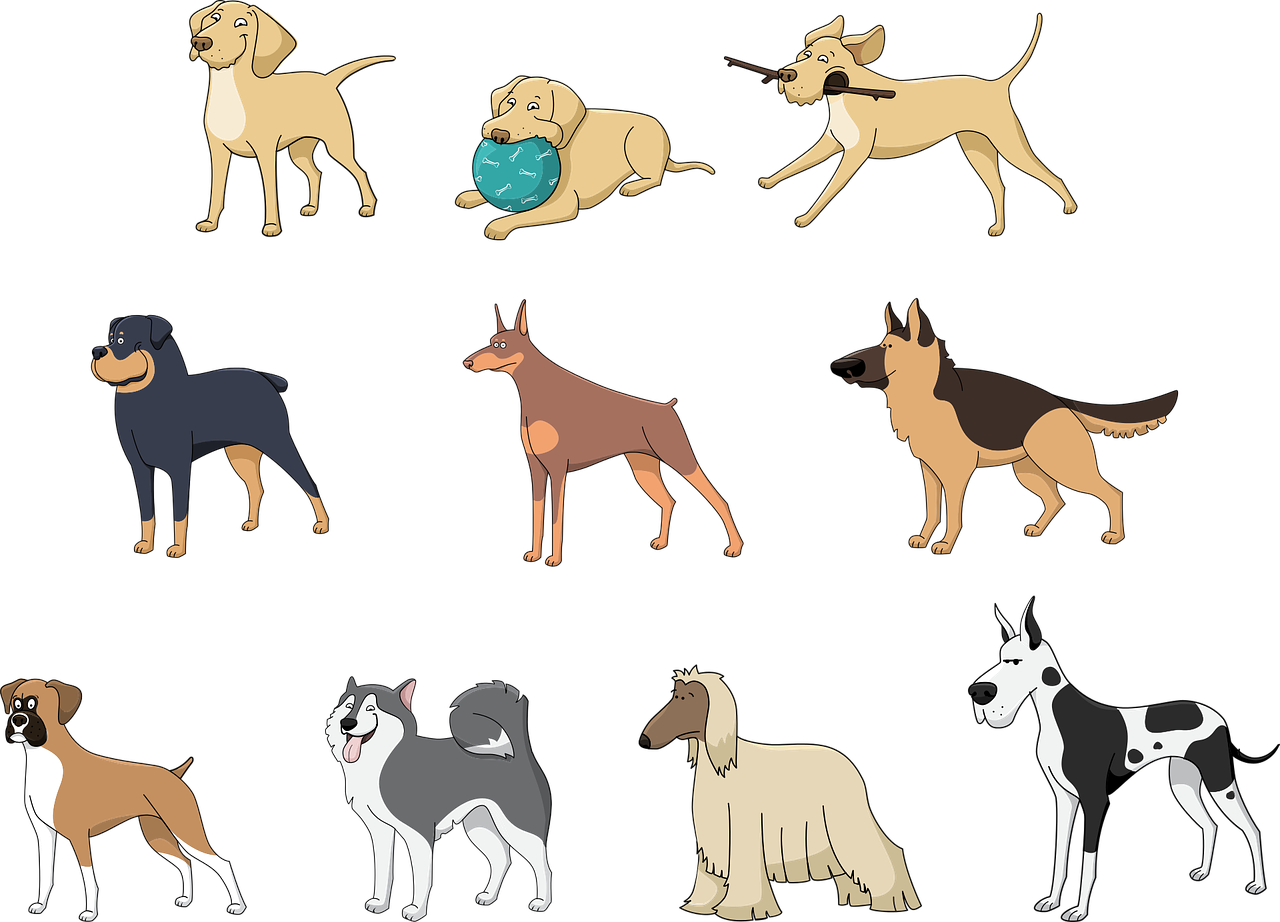
Table of Contents
The Biggest Dog Breeds: Meet the Gentle Giants of the Dog World
Big dogs have a way of capturing our hearts. Their size makes them stand out, but it’s their personalities that truly win people over. Many of the biggest dog breeds are known for being loyal, calm, affectionate, and incredibly gentle with people and other pets. Whether you’re thinking about adopting a large dog or just love learning about them, it’s easy to see why these giant breeds are so special. Their strength, confidence, and loving nature make them unforgettable companions.
What Makes a Dog Breed “Big”?
When most people think of big dogs, they imagine tall, strong, powerful breeds that weigh as much as an adult human. While every dog is unique, giant breeds typically weigh 90 pounds or more and stand tall enough to reach your shoulders when they’re on their hind legs. These breeds were originally bred for tasks like guarding property, pulling carts, rescuing people, or working alongside farmers and livestock. Today, they’re often kept as loving family pets because of their calm personalities and loyal nature.
Big dog breeds tend to grow slower than smaller breeds, and they reach full maturity later in life. They also require more space, more food, and more training, but the bond you build with one of these gentle giants is truly unmatched.
Great Dane
The Great Dane is one of the first dogs people imagine when they think of a giant breed. Known as the “Apollo of dogs,” this breed is tall, elegant, and surprisingly gentle. Adult males can stand over 32 inches tall at the shoulder and easily weigh 140 to 175 pounds. Despite their size, Great Danes are affectionate, friendly, and great with families. They love to be close to their people and often think they’re lap dogs, even though they take up the whole couch.
Saint Bernard
Saint Bernards are famous for their loyalty and long history as rescue dogs in the Swiss Alps. They are powerful, sturdy, and thick-coated, built to survive harsh winter conditions. Adults often weigh 120 to 180 pounds, and some grow even larger. Although their size can seem intimidating, Saint Bernards are calm and patient dogs with a soft spot for children. They enjoy slow-paced play, lounging around the house, and being part of the family.
Newfoundland
Newfoundlands are one of the sweetest breeds in the world. Nicknamed “Newfies,” they were originally bred as water rescue dogs. Their massive size, paired with their strong swimming ability and gentle temperament, makes them excellent working dogs and amazing family companions. They typically weigh 100 to 150 pounds, and their thick, fluffy coats give them an even larger appearance. Newfoundlands are known for being kind, patient, and extremely loyal.
Mastiff
Mastiffs are one of the heaviest dog breeds on the planet. While they’re not always the tallest, their muscular build makes them incredibly massive. Adult males can weigh anywhere from 160 to 230 pounds, with some record-breaking dogs weighing even more. Despite their size, Mastiffs are typically quiet, laid-back, and protective. They bond deeply with their families and often act as gentle guardians.
Irish Wolfhound
The Irish Wolfhound is one of the tallest dog breeds in the world. These dogs can reach heights of 34 to 36 inches at the shoulder, making them taller than many Great Danes. They were originally bred for hunting wolves and elk, so they have powerful legs and an athletic build. Even with their hunting background, Irish Wolfhounds are calm, friendly, and gentle. They do best in homes where they have room to stretch out and enjoy quiet companionship.
Leonberger
The Leonberger is a majestic and striking breed known for its lion-like appearance. These dogs often weigh 90 to 160 pounds and have thick, water-resistant coats that make them perfect for cold climates. Leonbergers are incredibly affectionate and thrive in family settings. They’re smart, gentle, and eager to please, making them great companions for active families who enjoy outdoor adventures.
Bernese Mountain Dog
Bernese Mountain Dogs may not be quite as huge as some of the other giant breeds, but they still fall comfortably into the “big dog” category. Weighing 80 to 115 pounds, they’re large, strong, and beautifully marked with black, white, and rust-colored fur. Bernese Mountain Dogs are known for their sweet and friendly nature. They love being part of the family, spending time outside, and soaking up attention from the people they love.
Living With a Giant Dog Breed
Living with a giant dog breed is rewarding, but it also comes with responsibilities. Large dogs need space to move comfortably, whether indoors or outdoors. They may eat more food and may require more frequent grooming depending on their coat type. Training is important for all dogs, but especially big ones, because good manners help prevent accidental injuries from excitement or jumping.
Exercise needs vary by breed, but many giant dogs prefer moderate activity rather than high-energy play. They enjoy daily walks, gentle exercise, and plenty of time spent relaxing near their owners. Big breeds also benefit from regular veterinary check-ups since they can be more prone to joint problems and other health concerns.
Frequently Asked Questions About Big Dog Breeds
Are big dog breeds good with kids?
Many large breeds are extremely gentle and patient with children. Breeds like Newfoundlands, Saint Bernards, and Great Danes are known for being especially friendly family dogs.
Do giant breeds need more exercise?
Not always. Some giant breeds prefer light to moderate activity rather than intense exercise. They usually enjoy daily walks, calm play, and plenty of rest.
How long do big dog breeds live?
Large breeds typically have shorter lifespans than smaller dogs. Many giant breeds live 7 to 10 years, although proper care, nutrition, and vet visits can help them live longer.
Are giant dogs harder to train?
Not necessarily. Many big breeds are intelligent and eager to please. Consistent training, positive reinforcement, and early socialization help them develop good manners.
Do giant breeds eat a lot?
Big dogs do eat more than smaller breeds, but the amount varies by breed and activity level. High-quality food that supports joint and bone health is important for large dogs.
List of Biggest Dog Breeds
Big dog breeds may look powerful and intimidating, but most of them are gentle giants with loving personalities. These dogs thrive on human companionship, enjoy being part of the family, and bring a sense of calm and comfort to the home. Whether you love their impressive size, their steady temperament, or their affectionate nature, giant dogs have a way of creating unforgettable bonds.
If you’re considering adding a big dog breed to your family, make sure you’re prepared for their needs—and ready for all the love they’ll bring into your life. And if your gentle giant ever needs a fun and safe place to play, socialize, or burn off energy, Woof Playcare is always here to help.

